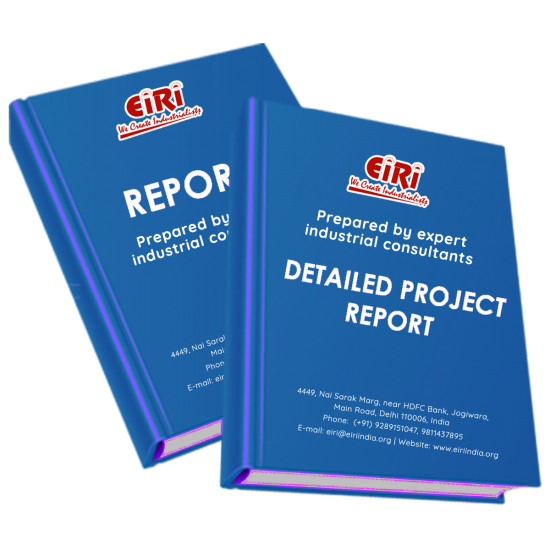Description
INTRODUCTION
PHYSICAL AND CHEMICAL PROPERTIES
TABLE 1
SOLUBILITY OF AMMONIUM NITRATE
TABLE 2
TABLE 3
BOILING POINT OF AMMO NITRATE SOLUTION
TABLE 4
CRYSTALLINE FORM OF NH4
TABLE 5
SPECIFIC HEATS OF AQUEOUS SOLUTION OF NH4NO3
B.I.S. SPECIFICATION
USES AND APPLICATION
MARKET OVERVIEW OF AMMONIUM NITRATE
HIGH-DENSITY AMMONIUM NITRATE WILL LEAD THE MARKET SHARE
THE AGRICULTURAL INDUSTRY WILL AUGMENT THE PRODUCT DEMAND
MERGERS & ACQUISITIONS TO CREATE MARKET OPPORTUNITIES
SEQUENCES IN AMMONIUM NITRATE MANUFACTURE
FIGURE: AMMONIUM NITRATE MANUFACTURING OPERATIONS.
PROCESS DESCRIPTION OF TECHNICAL AMMONIUM NITRATE
SOLUTION SECTION (WET ZONE)
REACTION OF REACTANTS IN PIPE REACTOR
AMMONIUM NITRATE CONCENTRATION
DRY SECTION- LDAN & HDAN PLANT
AMMONIUM NITRATE SOLUTION PRILLING
DRYING OF THE PRILLS
SCREENING, COOLING AND COATING
HANDLING & BAGGING
THE PROCESS FOR PRODUCING AMMONIUM NITRATE
RAW MATERIALS REQUIREMENT/MONTHS
TECHNOLOGY SUPPLIERS
PROCESSES OF AMMONIUM NITRATE
AMMONIUM NITRATE PRILLS
SECOND PROCESS (FOR AMMONIUM NITRATE CRYSTALS)
CONTINUOUS VACUUM CRYSTALLIZATION
TECHNICAL ASPECTS FOR AMMONIUM NITRATE
NEUTRALISATION
NEUTRALISERS
BAT REQUIREMENTS FOR NEUTRALISERS SHOULD INCLUDE THE FOLLOWING:-
STEAM PURIFICATION
DROPLET SEPARATION TECHNIQUES
SCRUBBING DEVICES
CONDENSATE TREATMENT
EVAPORATION
PRILLING AND GRANULATION
PRILLING
GRANULATION
EMISSIONS INTO AIR FROM PRILLING AND GRANULATION PLANTS
COOLING
CONDITIONING
OTHER LOSSES
PARAMETERS IN AMMONIUM NITRATE MANUFACTURE
TABLE: BASIC PROCESS PARAMETERS AND DESIGNS IN AMMONIUM NITRATE PRODUCTION PLANTS
FIG: BLOCK FLOW DIAGRAM OF AMMONIUM NITRATE PRODUCTION
PLANT WITH 2 STAGE ATMOSPHERIC NEUTRALIZATION AND
ATMOSPHERIC FALLING FILM EVAPORATOR WITH HOT AIR STRIPPING
HEAT OF REACTION, PROBLEMS AND LIMITATIONS
TABLE: HEAT OF REACTION OF AMMONIA AND NITRIC ACID IN AMMONIUM NITRATE SYNTHESIS
PRINCIPLES OF PLANT LAYOUT
STORAGE LAYOUT:
EQUIPMENT LAYOUT:
SAFETY:
PLANT EXPANSION:
FLOOR SPACE:
UTILITIES SERVICING:
BUILDING:
MATERIAL-HANDLING EQUIPMENT:
RAILROADS AND ROADS:
MAJOR PROVISIONS IN ROAD PLANNING FOR MULTIPURPOSE SERVICE ARE:
PLANT LOCATION FACTORS
PRIMARY FACTORS
1. RAW-MATERIAL SUPPLY:
2. MARKETS:
3. POWER AND FUEL SUPPLY:
4. WATER SUPPLY:
5. CLIMATE:
SPECIFIC FACTORS
6. TRANSPORTATION:
A. AVAILABILITY OF VARIOUS SERVICES AND PROJECTED RATES
7. WASTE DISPOSAL:
8. LABOR:
9. REGULATORY LAWS:
10. TAXES:
11. SITE CHARACTERISTICS:
12. COMMUNITY FACTORS:
13. VULNERABILITY TO WARTIME ATTACK:
14. FLOOD AND FIRE CONTROL:
EXPLANATION OF TERMS USED IN THE PROJECT REPORT
1. DEPRECIATION:
2. FIXED ASSETS:
3. WORKING CAPITAL:
4. BREAK-EVEN POINT:
5. OTHER FIXED EXPENSES:
6. MARGIN MONEY:
7. TOTAL LOAD:
8. LAND AREA/MAN POWER RATIO:
PROJECT IMPLEMENTATION SCHEDULES
INTRODUCTION
PROJECT HANDLING
PROJECT SCHEDULING
PROJECT CONSTRUCTION SCHEDULE
TIME SCHEDULE
PRESENT MANUFACTURER OF AMMONIUM NITRATE
SUPPLIERS OF RAW MATERIALS
AMMONIA
NITRIC ACID
SUPPLIERS OF PLANT AND MACHINERY
APPENDIX – A:
01. PLANT ECONOMICS
02. LAND & BUILDING
03. PLANT AND MACHINERY
04. OTHER FIXED ASSESTS
05. FIXED CAPITAL
06. RAW MATERIAL
07. SALARY AND WAGES
08. UTILITIES AND OVERHEADS
09. TOTAL WORKING CAPITAL
10. TOTAL CAPITAL INVESTMENT
11. COST OF PRODUCTION
12. TURN OVER/ANNUM
13. BREAK EVEN POINT
14. RESOURCES FOR FINANCE
15. INSTALMENT PAYABLE IN 5 YEARS
16. DEPRECIATION CHART FOR 5 YEARS
17. PROFIT ANALYSIS FOR 5 YEARS
18. PROJECTED BALANCE SHEET FOR (5 YEARS)



